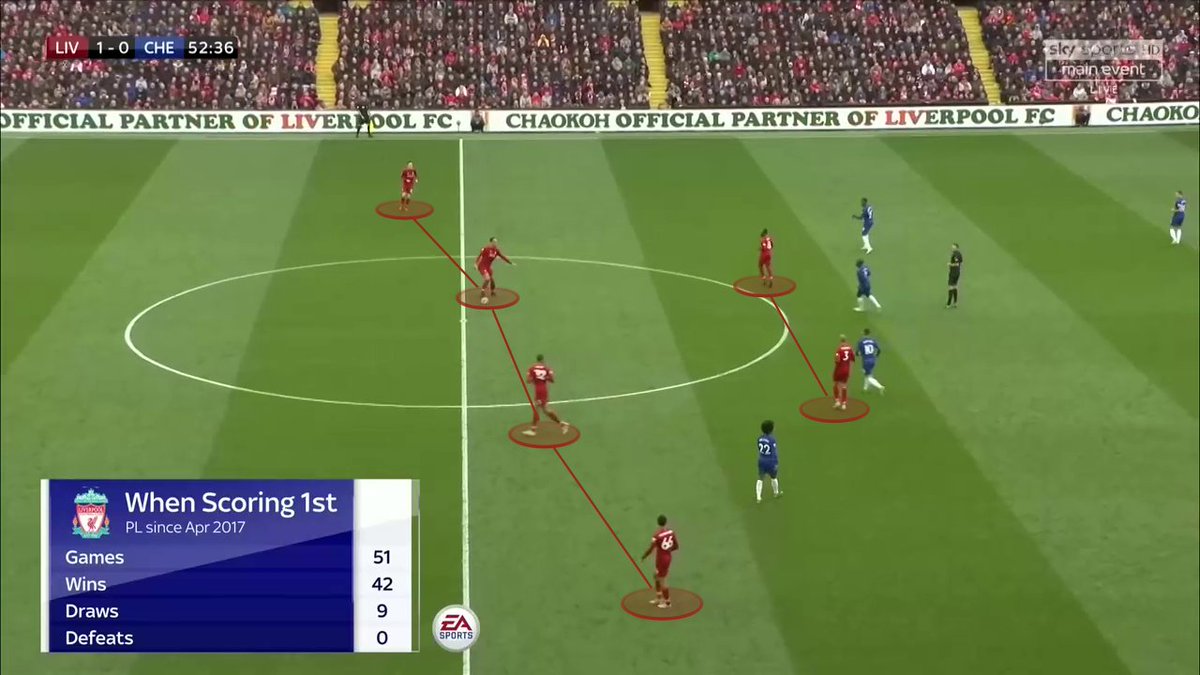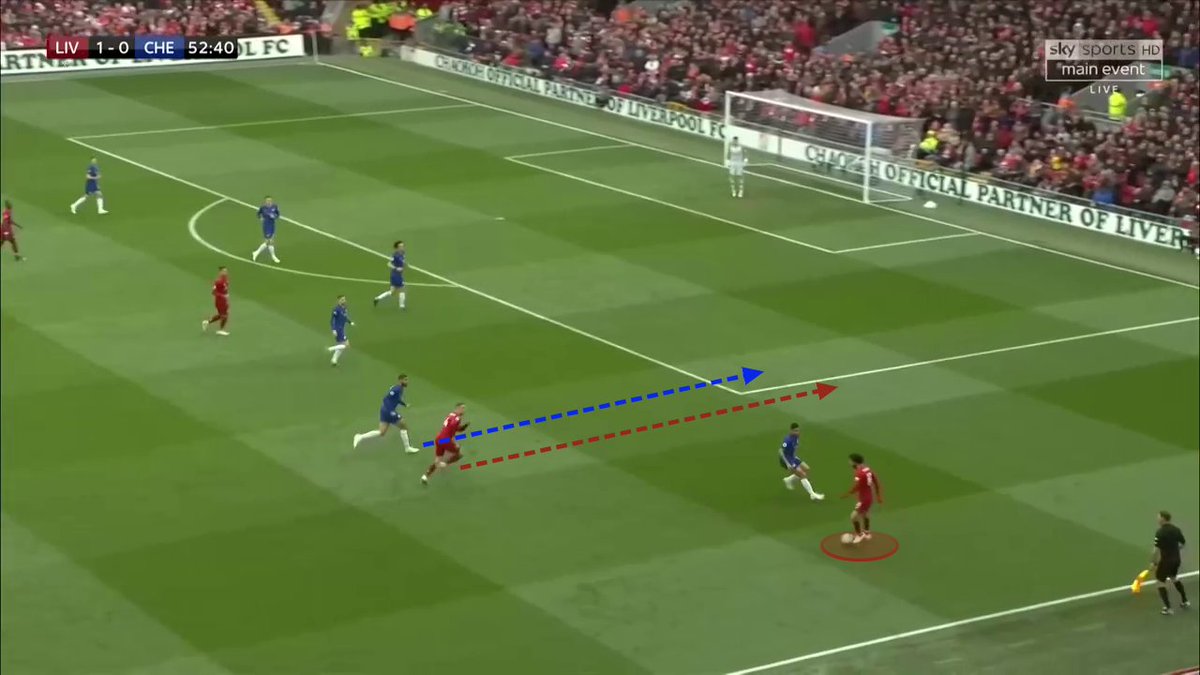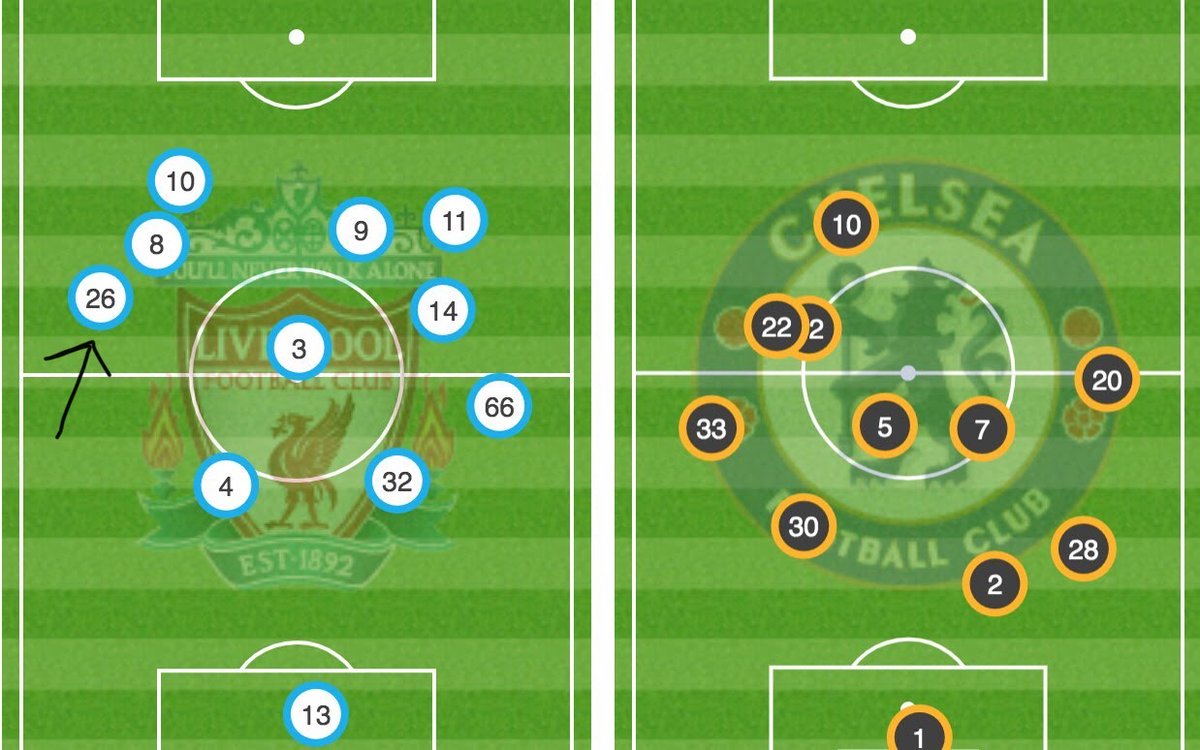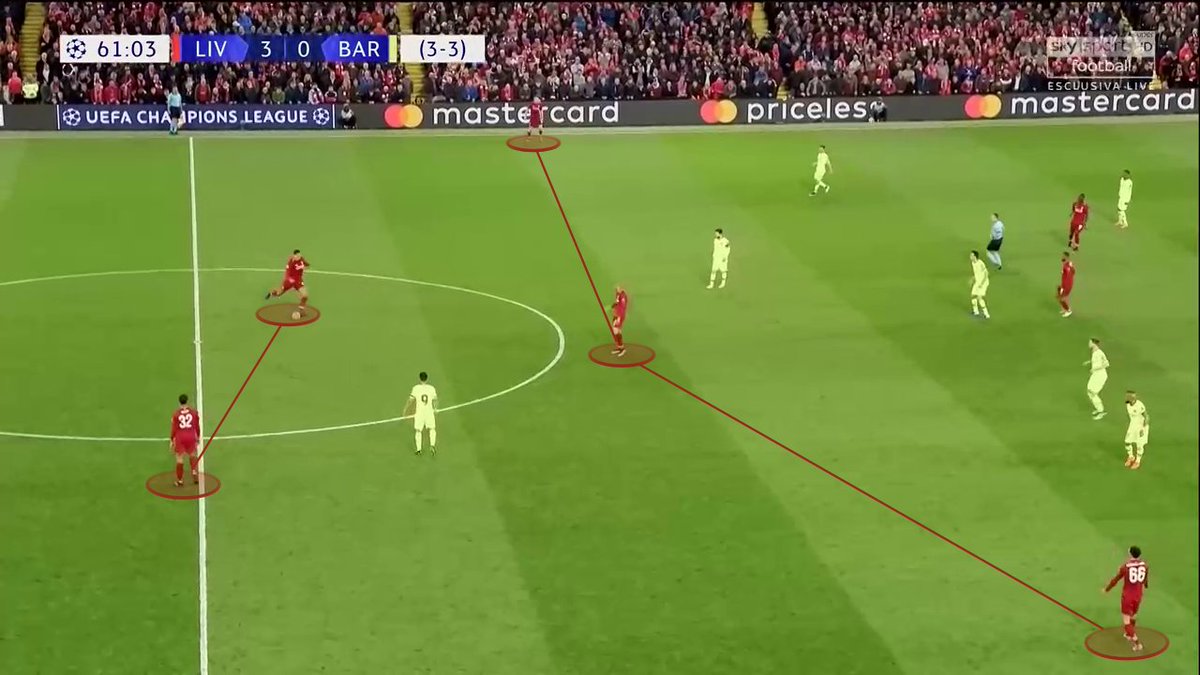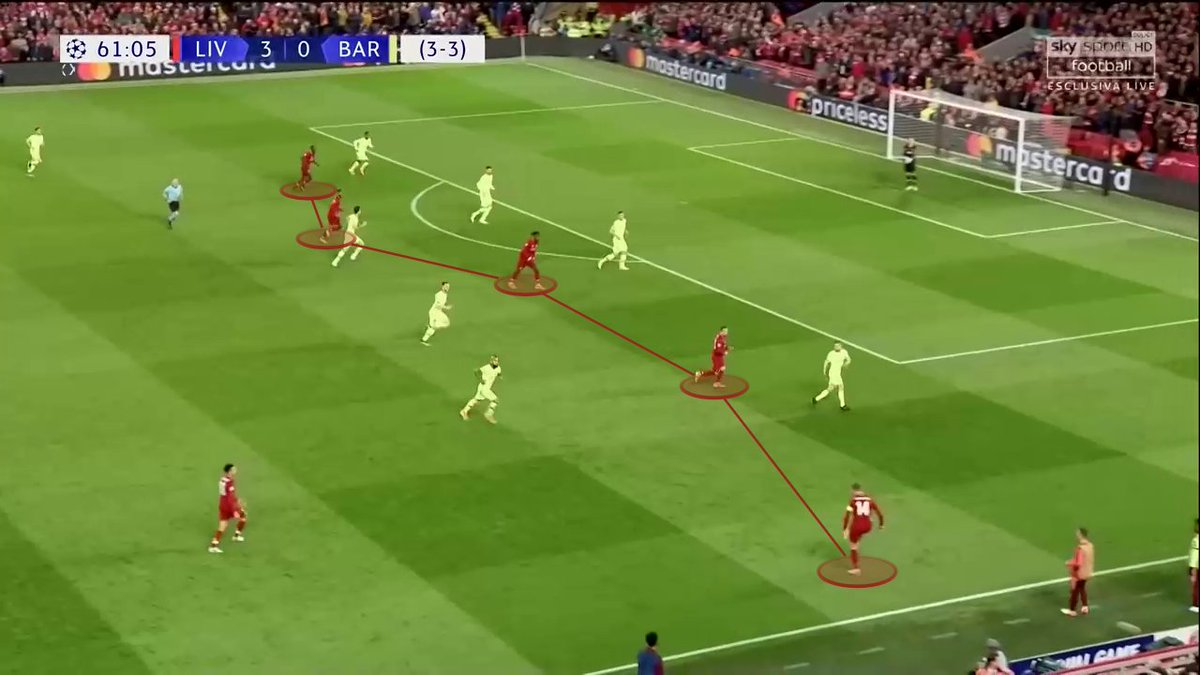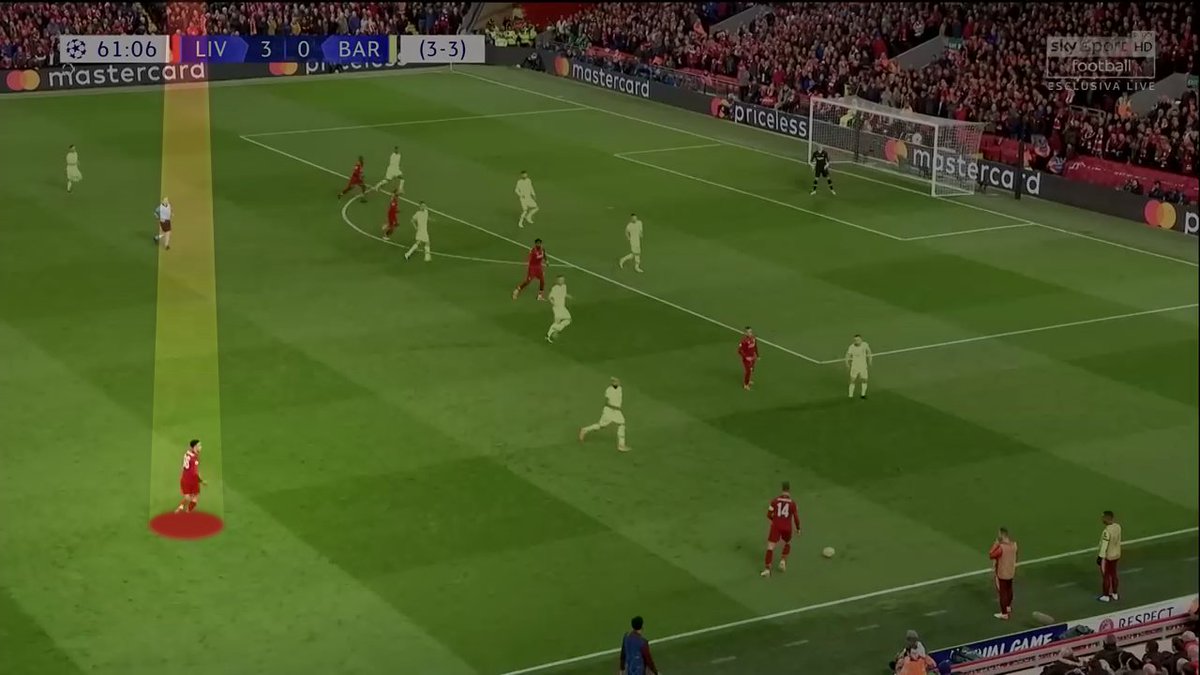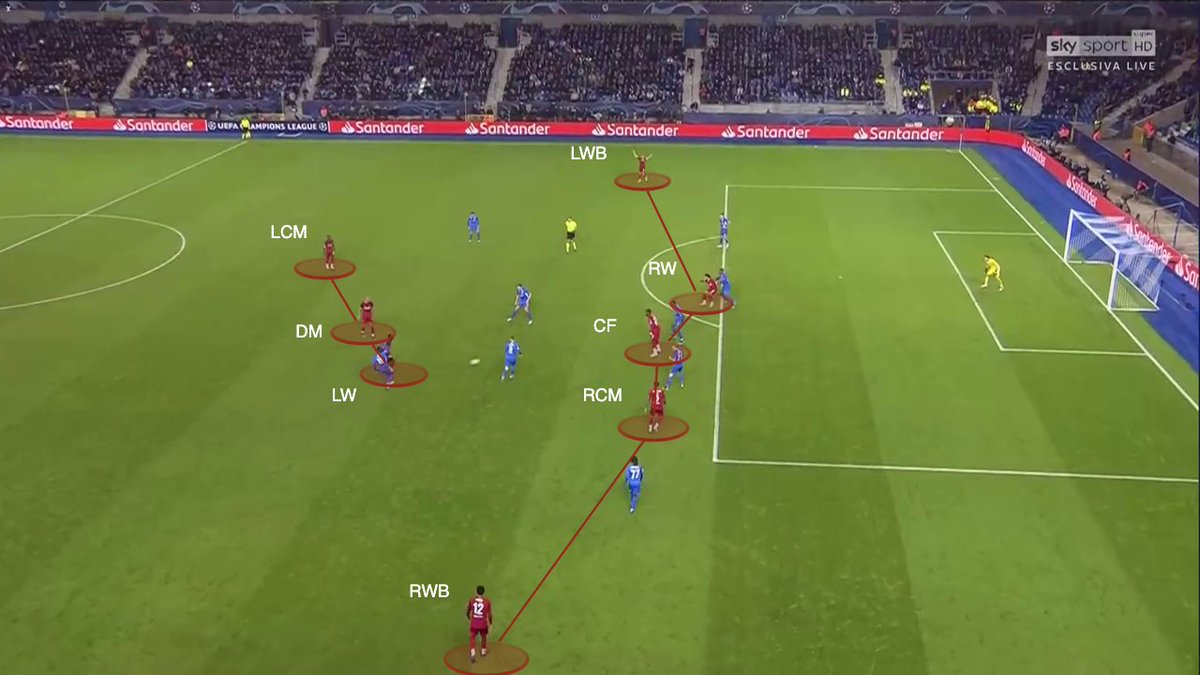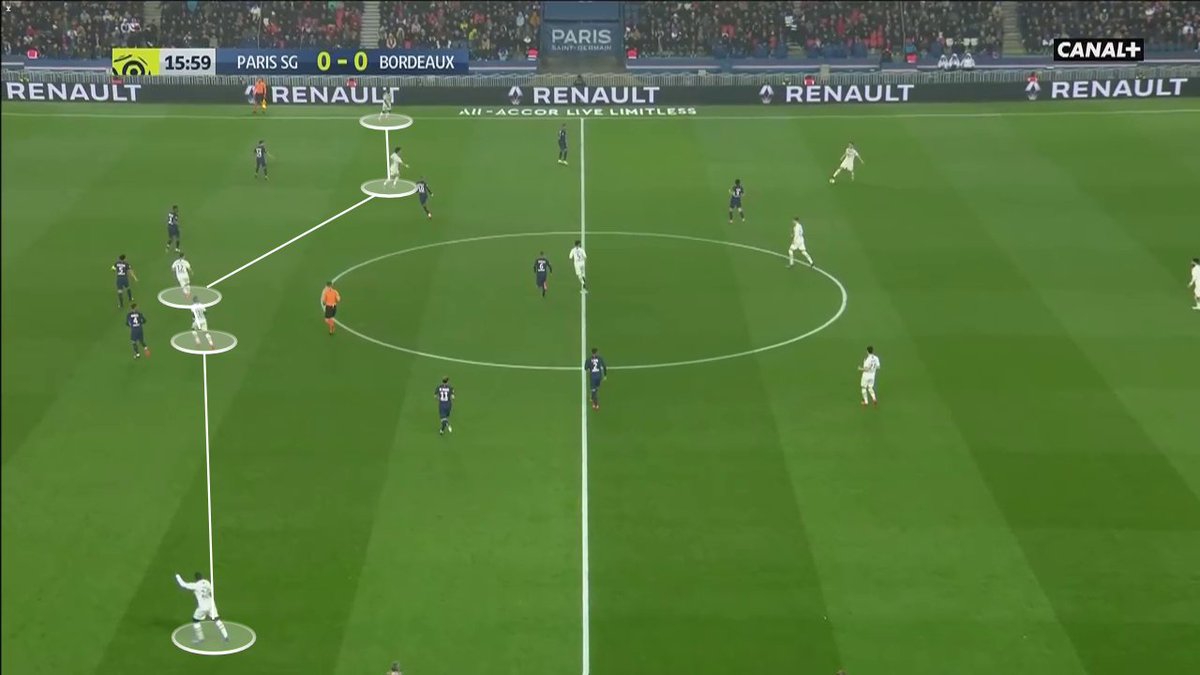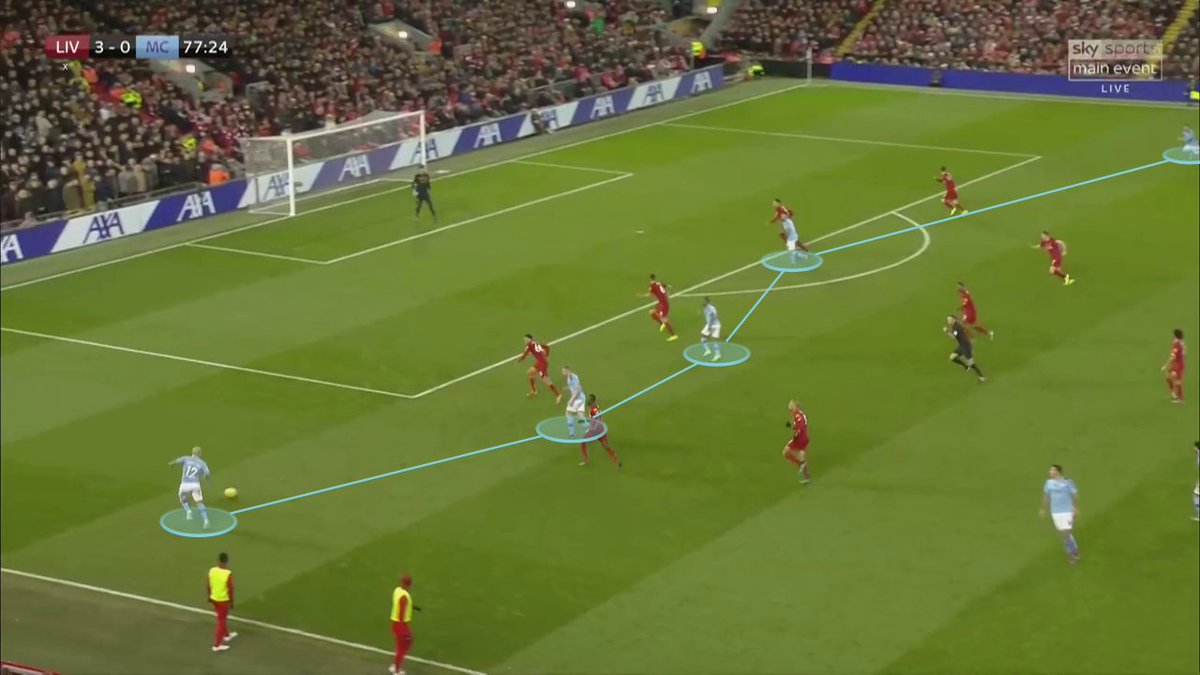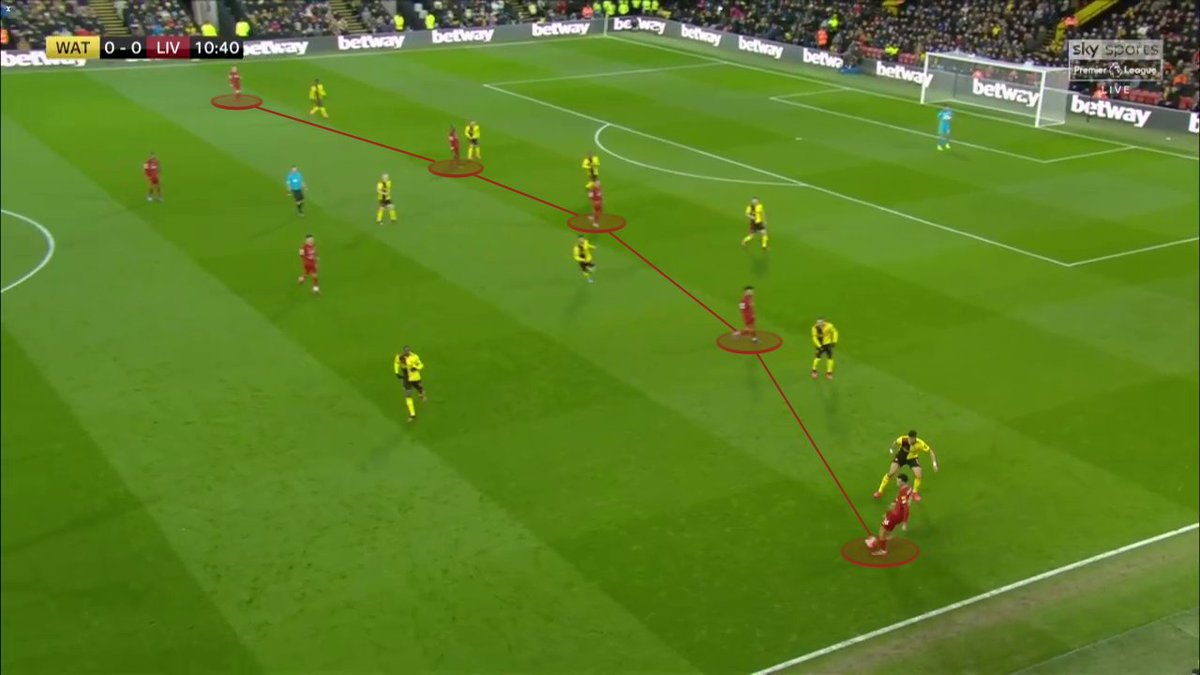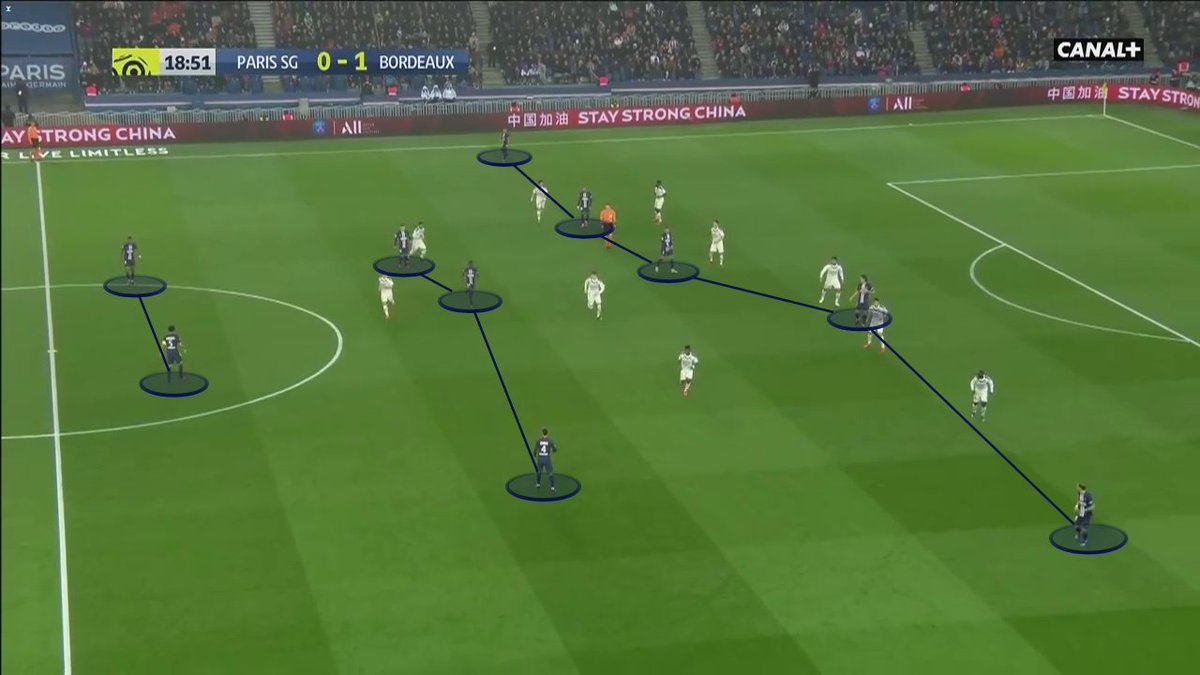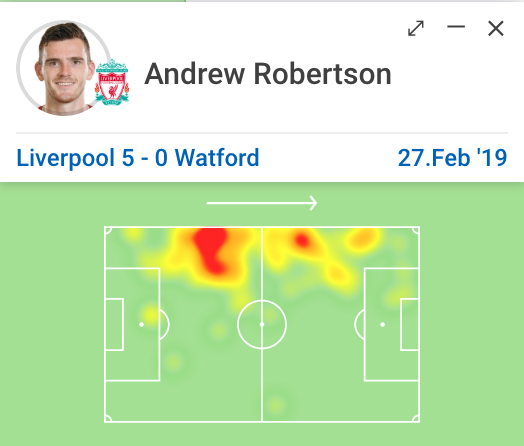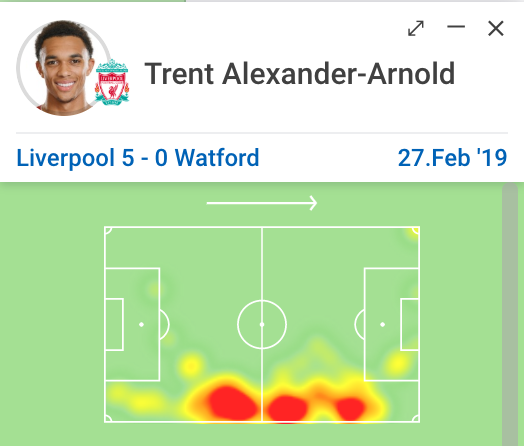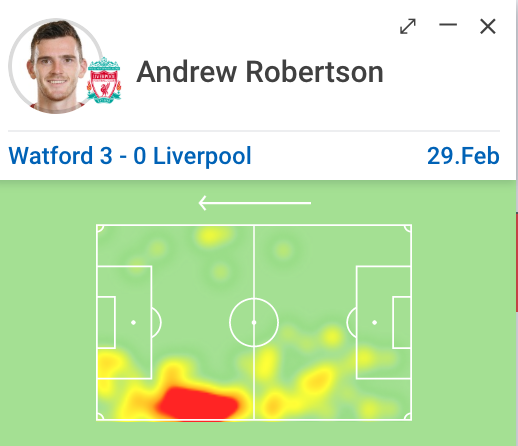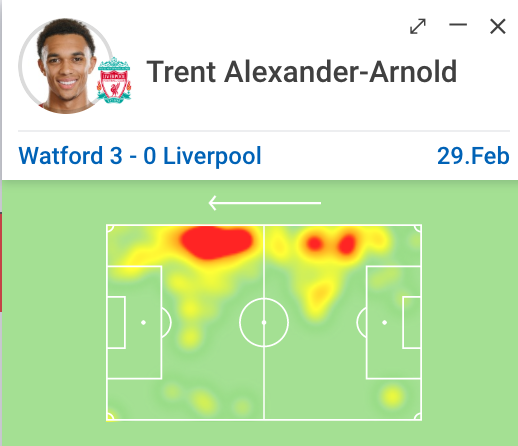THREAD: How Liverpool attacking patterns evolved using their wing-backs in an attacking role  https://abs.twimg.com/emoji/v2/... draggable="false" alt="⬇️" title="Downwards arrow" aria-label="Emoji: Downwards arrow">
https://abs.twimg.com/emoji/v2/... draggable="false" alt="⬇️" title="Downwards arrow" aria-label="Emoji: Downwards arrow">
Before making a quick introduction on the Reds& #39; WBs contribution so far this season, here is a little reminder regarding the different statistics we will use in this thread:
Progressive pass: « are forward passes that are 30m long when the pass starts in the team& #39;s own half or at least 10m in length in the opponent& #39;s half. »
Key pass: « the final pass or pass-cum-shot leading to the recipient of the ball having an attempt at goal without scoring. »
Key pass: « the final pass or pass-cum-shot leading to the recipient of the ball having an attempt at goal without scoring. »
2019/2020:
@trentaa98 is the 4th assist provider in the top 5 leagues (12 assists, 2nd in PL) just ahead of Leo Messi.
Best progressive passes per 90 min ratio in the Top 5 league, 1st in PL (16,13 per match).
6th key passes provider per 90 min in PL (0,99), 1st WB of the rankg
@trentaa98 is the 4th assist provider in the top 5 leagues (12 assists, 2nd in PL) just ahead of Leo Messi.
Best progressive passes per 90 min ratio in the Top 5 league, 1st in PL (16,13 per match).
6th key passes provider per 90 min in PL (0,99), 1st WB of the rankg
2019/2020:
@andrewrobertso5 is the 3rd assist provider in PL (equal) with 7.
8th progressive pass per 90 min ratio in PL (12,07 per 90 mins)
11th key passes provider per 90 min in PL (0,83), 3rd WB of the ranking.
@andrewrobertso5 is the 3rd assist provider in PL (equal) with 7.
8th progressive pass per 90 min ratio in PL (12,07 per 90 mins)
11th key passes provider per 90 min in PL (0,83), 3rd WB of the ranking.
First, some patterns in counterattacking/fast playing stages last season: TAA and AR running upfield on their flanks as soon as the ball is recovered/the difference is made. LW, CF, RW between the left and the right half-spaces, to combine and finish the move.
Concerning the movement of WBs so far this season, in counterattacking/fast playing stages, it’s been similar. As soon as the ball is recovered, they bring their influence by manipulating the spaces, and showing their amazing long-range passing abilities.
Let’s now analyse the Reds attacking patterns in possession phases:
1st goal ag. Chelsea: TAA low on the pitch and stayed aligned with the DM. Both LCM and RCM moving high to make a 5/6 players attacking line (including AR) into an attacking line. RW wide, LW left half-space
1st goal ag. Chelsea: TAA low on the pitch and stayed aligned with the DM. Both LCM and RCM moving high to make a 5/6 players attacking line (including AR) into an attacking line. RW wide, LW left half-space
2nd goal ag. Chelsea: Both WBs are very low, helping the CBs and the DM to build from the back, and preventing any counter-attacks risks. CMs running upfield to be integrated into the attacking line, RW wide.
On this average position map against Chelsea, we can see TAA stayed deep and AR higher, positioned just behind the attacking line, supporting actions and creating width.
Here is a similar attacking pattern against WH.
Movement of the CMs high to make a 4/5 attacking line RW or LW wide to disrupt opposition’s defensive shape, WBs just behind to help attack, and to offer a crossing opportunity or counter-press in case the ball gets lost.
Movement of the CMs high to make a 4/5 attacking line RW or LW wide to disrupt opposition’s defensive shape, WBs just behind to help attack, and to offer a crossing opportunity or counter-press in case the ball gets lost.
Similar plans again against Barcelona during the “Miracle of Anfield” game. Attacking line of 5, 2 CMs+RW+CF and LW. RWB just behind. Only difference here, the RCM is wide, not the RW.
However, further attacking plans took shape last year. The WBs being the key.
Firstly, against MCity, with this attacking line of 4 players, only one CM’s high, RW+CF very close to the edge of the box + LWB creates width.
Firstly, against MCity, with this attacking line of 4 players, only one CM’s high, RW+CF very close to the edge of the box + LWB creates width.
New examples here of the WBs attacking formation against Porto. Klopp’s shaping a new attacking pattern with a line of 5: LWB and RWB wide, LW, CF, and RW very close to combine, finish chances and create space on the wings.
The Reds offensive formation on the 2018/2019 season went through different patterns. Starting from a 4/5 players attacking line, CMs very high, wingers wide, WBs and DM lower, preventing counterattacks to WBs very high creating width and included into the attacking line.
However, this season, the attacking pattern of Liverpool has been altered by J.Klopp.
The WBs have been given more offensive responsibilities as they are now in charge of creating width. The LW, CF, and RW are very close to finish chances around and in the box.
The WBs have been given more offensive responsibilities as they are now in charge of creating width. The LW, CF, and RW are very close to finish chances around and in the box.
Further action of the new attacking pattern, Klopp uses his CMs deeper to build the actions and prevent counterattacks. Though, they take part in the attacking line as soon as a winger or forward comes deeper to play between the lines.
Klopp has reshaped the Reds attacking patterns in possession phases since last season frequently asking his WBs to create this attacking formation by being very high on their flanks. Which was systematically the CMs/ wingers’ role last year.
The main ones https://abs.twimg.com/emoji/v2/... draggable="false" alt="👇" title="Down pointing backhand index" aria-label="Emoji: Down pointing backhand index">:
https://abs.twimg.com/emoji/v2/... draggable="false" alt="👇" title="Down pointing backhand index" aria-label="Emoji: Down pointing backhand index">:
The main ones
Revealed by Pep Guardiola, this 5 players attacking line pattern is now very popular in PL and other Top 5 league as PSG and Bordeaux.
To conclude this thread, some heat maps of the WBs offensive contribution evolution through the seasons.
If you are interested in learning more about the 5 players attacking line, read this article by @JulienMomont ! (In french though) https://rmcsport.bfmtv.com/football/en-premier-league-l-ere-de-l-attaque-a-cinq-1869791.html">https://rmcsport.bfmtv.com/football/...

 Read on Twitter
Read on Twitter